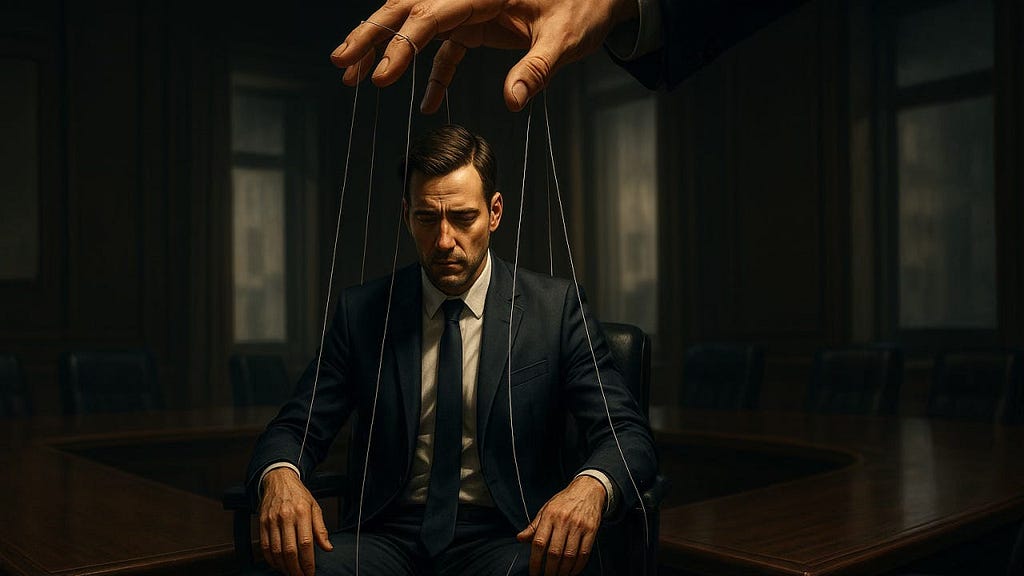[TL;DR: Just as parasites manipulate host behaviours for their benefit, our internal microbiota subtly influence our dietary choices and behaviours to enhance their survival. Similarly, organizations risk strategic stagnation when overly influenced by dominant customers, neglecting disruptive innovations essential for long-term health and adaptability. This Thursday Thought emerges from the surprising connections from eclectic insights — from Steven Gundry’s Gut-Brain Paradox to the works of Joseph Bower, Clark Gilbert, Robert Burgelman, and the late Clay Christensen.]
“Although most managers like to think they are in control, customers wield extraordinary power in directing a company’s investments. Before managers launch a technology, develop a product, build a plant, or establish new distribution channels, they must look to their customers first: Do they want it? How big will the market be? Will the investment be profitable? The more astutely managers ask and answer these questions, the more completely their investments will align with their customers’ needs.” — Clayton Christensen
Nature’s Dark Puppet Masters
https://medium.com/media/5446bde98672811895fa46d45b71027b/href
The fungus Ophiocordyceps unilateralis orchestrates one of nature’s most chilling manipulation tactics. Infected ants are compelled to climb to a precise 25 cm height above the forest floor, latch onto leaf veins on the north side of saplings, and die. The fungus then sprouts through the ant’s head, showering the ant colony with spores to propagate the cycle.
Fungi and parasites have existed far longer than complex organisms like humans. Humans themselves are composed of fungi, parasites, and microbes. Consequently, parasites have finely tuned their ability to alter host behaviours, ensuring their own survival and proliferation.
Our guest on the Innovation Show, Steven Gundry, explores a similar phenomenon through the lens of human biology. Like the fungus manipulating ants, our gut microbes subtly influence our behaviour, steering resource allocation to benefit their proliferation, sometimes at the expense of our overall health.
Microbial Mind Control

“Your gut buddies are the proverbial puppet masters pulling the strings, and you are merely the puppet… Microbes don’t just live inside of us, whether it’s in our guts or our blood or our brains. To an enormous extent, they control us, playing an outsized role in developing our personalities, including how we think, feel, and act, the foods we prefer, and whether or not we’ll suffer from addiction, struggle with our mental health.” — Steven Gundry
Certain gut bacteria, like B. fragilis, thrive on saturated fats. As these microbes multiply, they release lipopolysaccharides (LPS), which signal our brains to crave more saturated fats, ensuring their own survival. While hunger is typically attributed to personal weakness, Gundry reveals that cravings are significantly driven by microbiota. Individuals consuming mainly prebiotic fiber — indigestible to humans but nourishing to beneficial microbes — often experience reduced hunger because their gut microbiome is balanced and no longer signals incessant cravings.
Just as microbes dictate human behaviour subtly for their survival, organizations can similarly fall victim to powerful, yet subtle external influences — particularly the preferences of their dominant customers. Without awareness, a firm’s strategic direction and resource allocation can become quietly captive, shaped more by customer demands than internal vision or long-term strategic foresight.
When Customers Hijack Strategy: The Invisible Hand

On the Innovation Show, Clark Gilbert emphasizes this critical insight:
“Clay took Joe’s (Bower) research on resource allocation and showed how customers can capture the resource allocation process… Current customers would trap the incumbent firm. Clay showed how a customer outside the firm can capture the resource allocation process and really control the firm’s strategy, with profound implications for evolutionary theory and how species evolve.”
I discussed a striking example of this dilemma recently with Robert Burgelman,highlighting Intel’s historical strategic challenges. Intel, renowned for its exceptional competency in DRAM technology, faced significant strategic misalignment when their largest customers began prioritizing cost and manufacturing efficiency. As Japanese competitors superior in manufacturing precision gained market share, Intel continued investing heavily in DRAM innovations — ultimately misaligned with emerging customer preferences. This case clearly demonstrates how customer influence subtly, yet powerfully, redirected strategic resources away from new opportunities toward outdated competencies.
Burgelman further described a nuanced strategic shift at Hewlett-Packard (HP). Initially, HP benefited from substantial synergy between its consumer-focused PC and printer businesses and its enterprise-focused server operations. However, technology shifts such as cloud computing and software-as-a-service led to divergent ecosystems, eroding these synergies. Top management found it increasingly difficult to allocate resources effectively between these now distinct business lines, ultimately leading HP to split into separate companies — a clear example of customer influence reshaping resource allocation and strategy.
This dynamic illustrates a broader phenomenon where established companies overly rely on customer input when determining strategic investments. In doing so, they inadvertently allow dominant customers’ short-term preferences to override critical long-term innovation imperatives. Just as our gut microbes subtly steer dietary choices, dominant customers subtly dictate strategic paths, leading to organizational rigidity and increased vulnerability to disruptive competitors.
By proactively recognizing and countering these subtle external influences — analogous to Gundry’s recommendation of balancing our microbiome through dietary interventions — organizations can preserve strategic flexibility and maintain sustained competitive advantage. The challenge for organizations lies in balancing the exploration of new strategic opportunities with the exploitation of existing capabilities and markets.
That episode with Steven Gundry:
https://medium.com/media/7a5a09a53d8633de7cddfa0e6bb71f6c/href
Clark Gilbert Episode
https://medium.com/media/e401dade00be00f260575678dcbb8f9d/href
Robert Burgelman Episode
https://medium.com/media/f3e1c47e4dde12586320337e6a0e6a42/href
Strategic Parasitism: How Customers Hijack Your Strategy was originally published in The Thursday Thought on Medium, where people are continuing the conversation by highlighting and responding to this story.